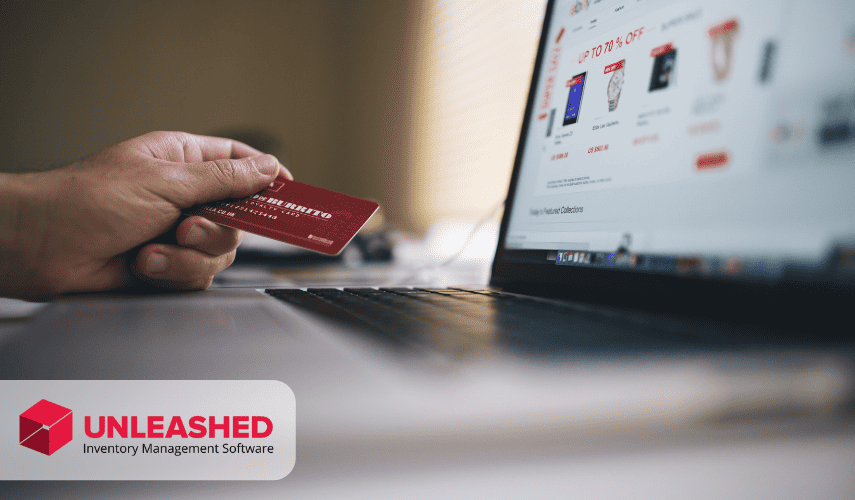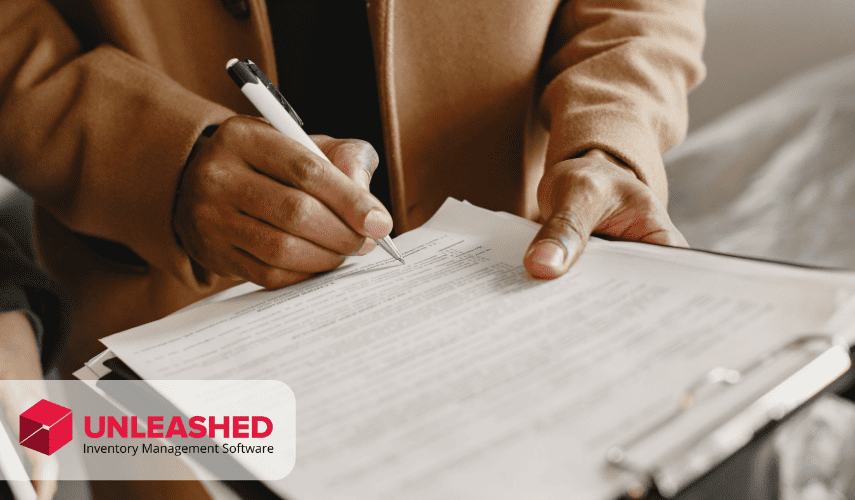
Behind every successful product business is a thoughtful procurement strategy designed to optimise the supplier management and purchasing process. This guide answers exactly what is procurement, how procurement works in a business, and which tools and strategies lead to supply chain success.
What is procurement?
Procurement is the process of sourcing suppliers, negotiating sales terms, and purchasing the goods a company needs to run its daily operations. Every step taken to acquire goods and services from providers falls under procurement.
The purpose of a procurement strategy is to obtain the best available deals and contracts with necessary suppliers, optimise the purchasing process, and track the movement of purchased goods.
Procure meaning
Procure means to obtain something with care and effort. In business, procurement refers to the obtention of all physical items and services a company requires. This can include everything from parts and raw materials to equipment installation and repair.
What does a procurement manager do?
“Supply chain managers must make sure the right goods and materials are in the right place at the right time, budgeted for appropriately, and replenished as needed.”
Procurement managers, sometimes called supply chain managers, develop and manage the contracts between the business they’re procuring for and its suppliers. They’re also the ones that source those suppliers and speak to them on behalf of the purchasing company.
In most cases, this means sourcing products or services and building a rapport with the relative vendors. Procurement managers often compare multiple vendors before beginning negotiations for a sales contract.
Procurement managers often work with Chief Financial Officers (CFOs), to determine budget restrictions, and Chief Operating Officers (COOs) to determine what goods and services need to be sourced.
Procurement vs. Purchasing
Purchasing is a function of procurement, but they’re not the same thing.
Procurement involves finding suppliers and building relationships, comparing the price of goods and services, negotiating contracts, and auditing the purchasing process. Purchasing, on the other hand, involves only the steps taken to acquire the goods and services a company needs.
 Purchase management exists as a critical step in the end-to-end procurement process.
Purchase management exists as a critical step in the end-to-end procurement process.
The procurement process: How it works
Your business's procurement process will largely depend on the unique structure and requirements of your business. However, we can generalise the core procurement steps that most companies will go through to acquire goods and services.
The 10-step procurement process:
- Identify business needs
- Submit purchase requisition
- Source and compare suppliers
- Negotiate contracts
- Create purchase order
- Receive invoices and manage order
- Receive and assess goods and services
- Organise payment
- Maintain records
- Review suppliers and deal contracts
To help you better understand the process, let’s break down how procurement works step by step.
1. Identify your business needs
Procurement begins with need identification. A business must determine its goals and the goods and services necessary to achieve them. This involves hashing out any labour, materials, technical specifications, or equipment required.
This step may be something simple, such as replenishment of a commonly used consumable. Or it may be complex, such as the construction of a second warehouse or parking lot.
2. Submit a purchase requisition
Once a need has been identified, the employee or team championing it submits a purchase requisition.
Purchase requisitions are formal requests that notify purchasing staff, managers, and finance teams of the goods or services required. This may include specific details, such as time frame, quantity, price, material type, and size.
The person or team that manages the budget allocation and purchasing will either approve or deny the purchase requisition. If it is approved, the procurement manager or team can proceed to the next step.
3. Source and compare suppliers
After a purchase requisition is approved, the procurement team or manager gets to work. Their first job is to locate potential suppliers for the goods and services required.
Consider the following qualities when assessing suppliers:
- Price
- Reputation and reliability
- Lead times
- Quality
- Location
You may also choose to look for suppliers that align with your ethics and values. Sustainability-focused brands may seek carbon-neutral suppliers. Local businesses may prefer to keep it local.
Once a list of viable suppliers has been collated, the purchaser submits a detailed request for quote (RFQ). Suppliers will respond to RFQs with quotes, usually detailing total time and costs.
The purchasing company then compares the quotes, assesses each vendor’s characteristics, and picks one to move forward with.
4. Negotiate sales contract
After selecting the optimal supplier, the purchasing business can begin to negotiate prices and terms.
If there is to be an ongoing contract, costs (and occasionally delivery times) can often be reduced through negotiation. Vendors will be more willing to drop their rates for the security of guaranteed future purchases, so the price first quoted to the purchasing party is typically subject to change.
 Once suppliers have been sourced, a procurement manager must negotiate a sales contract that benefits both parties.
Once suppliers have been sourced, a procurement manager must negotiate a sales contract that benefits both parties.
5. Generate a purchase order
After terms have been agreed upon by the purchasing business and the vendor, a purchase order (PO) is generated and sent to the supplier.
If you’ve already invested in purchase order management software, you’ll be able to auto-populate future POs with supplier and product details and automatically update your stock levels upon receipt.
Once the supplier has accepted and acknowledged a PO, the sales contract activates and becomes legally binding.
6. Order and invoice confirmation
When a supplier receives a PO, they will respond with a sales order confirmation. This details all the goods and services the purchasing business will receive in exchange for payment.
They will also send an invoice. This is a document that breaks down the costs of the purchase and functions as a formal request for payment.
This is the final step in which the purchasing party has the opportunity to change or cancel the order. It serves as the last chance to double-check that all the items and prices are correct.
7. Receive and approve goods or services
In the case of physical goods, the vendor prepares the order and ships the goods to the purchasing business. The purchasing business inspects the goods for accuracy and damage, checking each received item against the original PO.
In the case of service-based purchases, the vendor begins the task they have been hired to do and the purchasing business reviews their work. Some businesses may wish to also review that the materials and equipment quoted by the vendor match what is actually needed and used.
Accounts payable should then compare the PO with the invoice and order receipt or packing list. If there are discrepancies, these will need to be highlighted and resolved before organising payment.
- Learn more: How to Improve Receiving Efficiency
8. Arrange payment
Once the supplier has fulfilled the obligations of the contract, the purchasing business approves and pays the invoice.
Invoices must be paid for the full agreed-upon amount, on or before the due date. Businesses that pay their invoices on time and in full can build lasting relationships with suppliers and avoid unpleasant legal battles.
9. Maintain records
Accurate records should be kept from every step of the procurement process. This will help in the case of audits and tax calculations, and can also serve as an historical resource when assessing vendor prices for future orders.
If you’re using modern purchase order software to manage procurement, there will likely be an electronic log of all your procurement data safely stored within the system.
10. Regularly assess suppliers and deal terms
The procurement process should not be treated as linear, but rather as a continuous practice for sourcing the best deals for a company. Keep track of supplier performance – lead times, quality, reliability – and review your regular vendors on an ongoing basis.
Be prepared to switch vendors and renegotiate contracts for better terms if supplier performance begins to slip or you find a more desirable deal. Your long-term loyalty as a valued customer will also provide grounds for demanding better contract terms as time goes on.
 Procurement doesn't end when an order is received – teams must continue to assess suppliers to ensure they're getting the best deal available at any given time.
Procurement doesn't end when an order is received – teams must continue to assess suppliers to ensure they're getting the best deal available at any given time.
Types of procurement
Procurement is typically categorised into four types:
- Goods procurement
- Services procurement
- Direct procurement
- Indirect procurement
These categories are defined by what is being procured and its intended use. Most procurement jobs fall under two of the four types listed above.
Goods procurement
Goods procurement refers to the purchasing of physical and digital items, such as tools, raw materials, software, and finished products. This type of procurement relies on effective supply chain management and inventory optimisation.
Services procurement
Services procurement refers to the purchasing of services carried out by humans. This can come in the form of business consultations, labour work, legal and financial assistance, or company training.
Direct procurement
Direct procurement refers to the purchasing of goods or services that contribute to the production of a finished product. These are typically the items that will fit inside your cost of goods sold (COGS). For manufacturers and producers, this includes raw materials, components, and ingredients. For physical retailers and eCommerce businesses, it includes bulk products purchased with the intent of resale.
Indirect procurement
Indirect procurement refers to the purchasing of daily-use items and operational services that do not directly contribute to your bottom line. For example, consumables, safety equipment, warehouse renovations, advertising space, business consultations, and general maintenance.
 Procurement managers will often look far and wide to source the perfect supplier for each product or service needed by a business.
Procurement managers will often look far and wide to source the perfect supplier for each product or service needed by a business.
Procurement strategies
“Skills shortages trouble significant numbers of supply chain and procurement organizations, with many struggling to recruit employees who possess critical skills.”
A procurement strategy is a detailed plan for procuring goods and services.
It outlines the methods to be used for sourcing suppliers, negotiating contracts, and making purchases. It should also cover resources required for these tasks, such as staff and labour costs.
Procurement strategies should include:
- Goals: A list of your desired outcomes.
- Summary: A brief statement outlining the steps to be taken to achieve your goals.
- Time: Deadlines for completing each of the necessary tasks outlined in the strategic plan.
- Metrics and KPIs: The forms of measurement and benchmarks that reflect the successful execution of the strategy.
- Resources: A list of all the tools, people, budgets, equipment, and services that are required.
- Accountability: A clear breakdown of who will be responsible for managing and executing the various procurement tasks.
Let’s look at five procurement strategies for efficiently acquiring goods and services.
1. Supply chain optimisation
Supply chain optimisation is the process of improving the efficiency with which goods move through the supply chain. It involves improving supply chain visibility, optimising production and fulfilment processes, and increasing productivity every step of the way.
2. Supplier management
Supplier management is a procurement strategy for continuously assessing and mitigating supplier risk. It involves sourcing and testing new suppliers, analysing existing suppliers’ performances, and consistently bargaining for terms that will benefit your business.
3. Automation identification
Identifying opportunities for automation is essential in modern business procurement. Since procurement focuses on minimising the time and cost required to fulfil the needs of a business, optimising manual processes plays a critical role.
Common forms of automation in procurement include inventory management, software integration, communications automation, and production optimisation.
4. Procurement centralisation
Centralising all your procurement activities enables a readily available flow of data and ensures lines of communication are not crossed. In some cases, this could mean assigning a procurement manager to oversee procurement across all areas of the business.
Procurement centralisation allows businesses to act more efficiently and ensure that their budget is being divided in the most beneficial way.
5. Demand forecasting
Demand forecasting is the process of analysing historical data and various global trends to accurately predict what goods and services a business might need in the future.
By implementing effective demand forecasts, a procurement team can develop an effective long-term strategy and have more confidence in when and what to order. This ultimately helps with budget and resource allocation.
 Procurement strategies require careful planning, broad knowledge of a business's needs, and input from multiple departments.
Procurement strategies require careful planning, broad knowledge of a business's needs, and input from multiple departments.
Procurement metrics and KPIs
There are many procurement metrics and KPIs a business may wish to track.
Let’s look at five of the most important ones you should consider:
- Undamaged shipment rate: The consistency with which goods received from a supplier arrive undamaged.
(Total Amount of Undamaged Orders Received / Total Number of Orders Received) × 100 = Undamaged Shipment Rate
- On-time delivery rate: The delivery reliability of a specific supplier.
(On-time Orders / All Orders by a Single Supplier) × 100 = On-time Delivery Rate
- Cost of goods sold: The total cost of all direct labour and materials that go into producing a finished product.
Starting Inventory + Purchases – Ending Inventory = Cost of Goods Sold
- Purchase order cycle time: The average time it takes to process purchase requisitions and send POs to suppliers.
Number of Days to Process Requisitions and Send POs to Suppliers / Number of POs Sent to Suppliers = Purchase Order Cycle Time
- Supplier accuracy: The percentage of received orders that exactly match the items requested in a purchase order.
(Number of Accurate Orders from Supplier / Total Number of Orders from Same Supplier) × 100 = Supplier Accuracy
Procurement software
Procurement software refers to digital platforms or applications designed to automate and streamline much of the procurement process. It acts as a centralised location for managing purchase orders, reconciling received orders with POs, and automating supplier payments.
Sustainable procurement
Sustainable procurement involves analysing the environmental, economic, and societal effects of goods and services before making a purchase decision.
According to Amazon’s State of Business Procurement Report, 63% of companies are focused on improving sustainability in purchasing. This includes buying from sellers that follow sustainable practices such as renewable energy utilisation and net-zero carbon production.
A sustainable procurement strategy should consider the impact of goods and services over the entire product life cycle, including production, disposal, cost, and quality.
